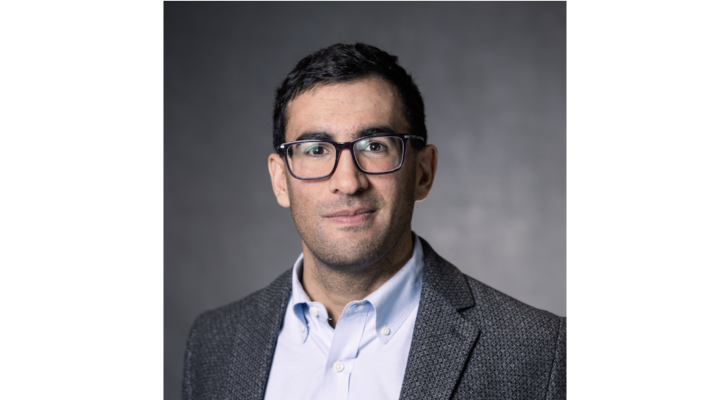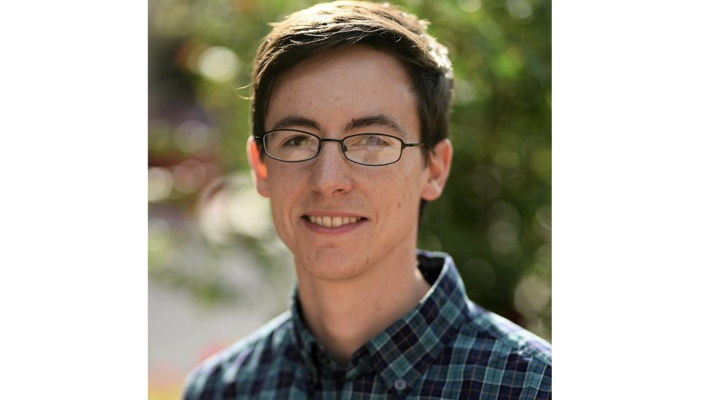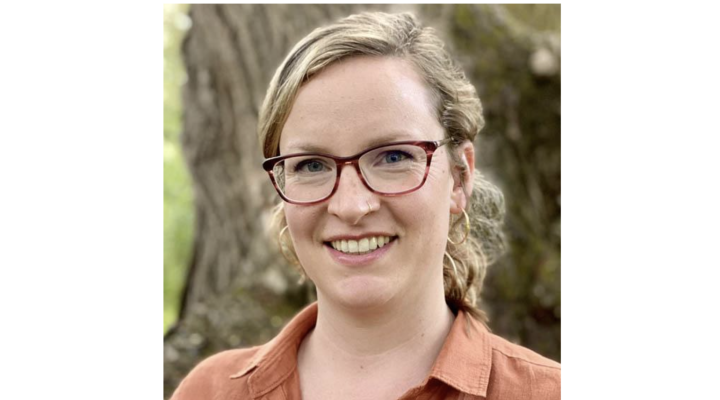If you search Flickr or Google images for Taughannock Falls, you'll get page after page of thumbnails that must be viewed separately, but Noah Snavely has found a way to stitch them into an interactive viewing experience.
Snavely was a graduate student when Internet photo sharing sites first became popular and he wondered how to better manage large collections of photos taken at the same location "I'm interested in using computer vision to reconstruct 3-D geometry for these sites, and then create interfaces for exploring them virtually," he says. "What my research has been able to do is take these large photo collections taken by many thousands of different people and automatically create a 3-D model."
Snavely was initially looking to improve the way personal photo collections are browsed by adding spatial controls so they could be navigated in 3-D, but then it occurred to him to try it on Internet photo collections. "I went to Google images and downloaded a bunch of photos of the Trevi Fountain taken by a bunch of different people and ran my same algorithms on them and it worked just fine," he says. "Having it run on a set of Internet photo collections in the wild was kind of surprising. And from there it just snowballed and we started trying to reconstruct larger and larger collections."
Microsoft developed Snavely's research into Photosynth, which has transformed the photos taken at thousands of landmarks and events, including President Barack Obama's inauguration. "I'm really excited that this research made its way into a product used by thousands of people," says Snavely.
The technology also has some more serious applications. "If you can virtually explore any place in the world from your computer because we've reconstructed it in 3-D from these online photo collections, that's a great resource for virtual tourism, but also education," says Snavely. "If you can capture 3-D geometry from these places, you can preserve that place and if something ever happened to it, you have a model that records what that place was like."
Such a model could be used to reconstruct Afghanistan's Bamyan Buddha's, destroyed by the Taliban in 2001. "Preservation is a big application of this," says Snavely. "Right now archaeologists tediously scan buildings and artifacts with a laser scanner. That can be expensive and difficult in remote locations and may be politically sensitive in some places, but if you can do the same thing with a camera and get the same result, I think it would have a big impact."
Snavely is most excited about using the technology to analyze how the world changes over time. "We're just getting started with this age of masses of digital photographs. The data is growing at this staggering rate and it will just accelerate," he says. "This is going to record all the changes that happen in the next century. I'm very excited about the ability to create a historical record that's very easy to use and go back to any time and see what things were like—kind of a visual historical record of the world."
Snavely says he chose Cornell because he found the faculty to be friendly and collaborative. "The computer science faculty has lunch with each other almost every day, really seem to like each other, and are very supportive," he says. "It was a really natural choice. And the quality of research here at Cornell is incredible."
If you search Flickr or Google images for Taughannock Falls, you'll get page after page of thumbnails that must be viewed separately, but Noah Snavely has found a way to stitch them into an interactive viewing experience.
Snavely was a graduate student when Internet photo sharing sites first became popular and he wondered how to better manage large collections of photos taken at the same location "I'm interested in using computer vision to reconstruct 3-D geometry for these sites, and then create interfaces for exploring them virtually," he says. "What my research has been able to do is take these large photo collections taken by many thousands of different people and automatically create a 3-D model."
Snavely was initially looking to improve the way personal photo collections are browsed by adding spatial controls so they could be navigated in 3-D, but then it occurred to him to try it on Internet photo collections. "I went to Google images and downloaded a bunch of photos of the Trevi Fountain taken by a bunch of different people and ran my same algorithms on them and it worked just fine," he says. "Having it run on a set of Internet photo collections in the wild was kind of surprising. And from there it just snowballed and we started trying to reconstruct larger and larger collections."
Microsoft developed Snavely's research into Photosynth, which has transformed the photos taken at thousands of landmarks and events, including President Barack Obama's inauguration. "I'm really excited that this research made its way into a product used by thousands of people," says Snavely.
The technology also has some more serious applications. "If you can virtually explore any place in the world from your computer because we've reconstructed it in 3-D from these online photo collections, that's a great resource for virtual tourism, but also education," says Snavely. "If you can capture 3-D geometry from these places, you can preserve that place and if something ever happened to it, you have a model that records what that place was like."
Such a model could be used to reconstruct Afghanistan's Bamyan Buddha's, destroyed by the Taliban in 2001. "Preservation is a big application of this," says Snavely. "Right now archaeologists tediously scan buildings and artifacts with a laser scanner. That can be expensive and difficult in remote locations and may be politically sensitive in some places, but if you can do the same thing with a camera and get the same result, I think it would have a big impact."
Snavely is most excited about using the technology to analyze how the world changes over time. "We're just getting started with this age of masses of digital photographs. The data is growing at this staggering rate and it will just accelerate," he says. "This is going to record all the changes that happen in the next century. I'm very excited about the ability to create a historical record that's very easy to use and go back to any time and see what things were like—kind of a visual historical record of the world."
Snavely says he chose Cornell because he found the faculty to be friendly and collaborative. "The computer science faculty has lunch with each other almost every day, really seem to like each other, and are very supportive," he says. "It was a really natural choice. And the quality of research here at Cornell is incredible."




